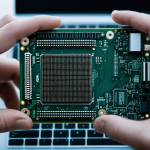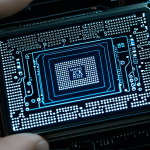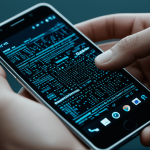Smartphone Innovation Leading Computing Evolution
Smartphone innovation has fundamentally transformed the future of computing by redefining how we interact with technology daily. These advancements extend beyond mere communication tools, positioning smartphones as powerful, adaptable computing platforms. Innovations in display technology, sensor integration, and software ecosystems have enabled smartphones to support increasingly complex applications — from augmented reality to real-time data processing. This evolution marks a significant shift in technological advancements that drive computing paradigms away from static, desktop-bound models toward dynamic, mobile-first experiences.
The influence of smartphone innovation on computing is visible immediately in personal, professional, and industrial contexts. Smartphones now serve as gateways for cloud computing, edge processing, and IoT device management, fundamentally altering workflows and access to information. Projected trends indicate that smartphones will continue reshaping computing landscapes by incorporating AI-assisted features and expanding hardware capabilities, enabling more sophisticated user interactions and machine learning tasks directly on-device.
In the same genre : What are the differences in smartphone usage between urban and rural UK?
Key milestones in this transformation include the integration of biometric security methods, high-refresh-rate displays, and multi-core processors optimized for mobile environments. Ongoing trends emphasize energy efficiency, modular software architectures, and enhanced connectivity options—all pivotal to sustaining this evolution. By continuously pushing the boundaries of what a compact device can achieve, smartphone innovation establishes the foundation for future computing models that prioritize portability, intelligence, and seamless integration across diverse technology ecosystems.
Hardware Advancements and New Possibilities
Advances in smartphone hardware evolution have dramatically expanded the capabilities of mobile devices. Significant progress in mobile processors now enables smartphones to perform tasks previously reserved for desktop computers. Modern chips integrate multiple cores optimized for power efficiency and performance, allowing complex computations, gaming, and AI inference directly on the device. These strides in processor design have been complemented by larger, faster memory modules and enhanced storage options, supporting smoother multitasking and quicker data access.
In parallel : How are UK gaming industries adapting to smartphone technology?
Battery technology continues to improve, addressing the higher energy demands of advanced hardware without sacrificing portability. Enhanced battery capacity and efficient power management enable prolonged usage, ensuring that users can rely on their devices for intensive workloads over extended periods. Together, processor, memory, and battery advancements directly impact device capabilities, enabling emerging applications such as real-time augmented reality, sophisticated imaging, and seamless cloud synchronization.
This hardware evolution fosters new computing experiences by bridging the performance gap between mobile and traditional platforms. As mobile hardware approaches parity with more powerful systems, it supports complex workloads including machine learning tasks on-device, video editing, and immersive gaming. Ultimately, the continuous refinement of smartphone hardware drives innovation across the broader future of computing, empowering users with performance and versatility previously unattainable in portable form factors.
Software, AI, and the Intelligent Edge
Smartphone AI has become central to the mobile software innovation driving the future of computing. Modern operating systems increasingly integrate AI capabilities directly on devices, enabling real-time processing without constant reliance on cloud connectivity. This shift boosts responsiveness and privacy, as sensitive data can be analyzed locally, reducing transmission risks.
Edge computing leverages this trend by relocating computational tasks from centralized servers to smartphones and other connected devices. When asked, “What exactly is edge computing?”—the answer is that it involves performing data processing near the source rather than in distant data centers. This proximity minimizes latency and enhances efficiency, crucial for applications like voice recognition, image processing, and augmented reality. For example, photo apps use edge AI to improve image quality instantly, while security systems analyze biometric data on-device to ensure fast and secure authentication.
The real-world impact of integrating smartphone AI with edge computing is broad. Devices now support sophisticated automation tasks, such as predictive text, intelligent assistants, and context-aware notifications, elevating user experience. Moreover, this combination drives advances in mobile security, with AI continuously monitoring threats and adapting defenses locally. By embedding intelligence at the edge, smartphones transcend traditional roles, becoming proactive partners in daily computing and automation workflows.
Connectivity and the Expansion of Ubiquitous Computing
In the modern landscape, 5G technology is pivotal to expanding the role of smartphones within ubiquitous computing. Offering remarkably low latency and high bandwidth, 5G networks enable smartphones to function as central hubs for managing a vast array of interconnected devices that comprise the Internet of Things (IoT). This enhanced connectivity supports real-time data exchange and seamless communication among devices, fostering an environment where computing is truly always-on and pervasive.
What makes 5G technology uniquely suited for this expansion? The answer lies in its ability to provide consistent, ultra-fast network speeds across dense device ecosystems without significant delays. This performance is critical for the smooth operation of IoT applications where milliseconds matter, such as remote health monitoring or smart city infrastructure.
Smartphones, equipped with advanced radios and software, orchestrate interactions among IoT sensors, wearables, and home automation systems. This integration positions mobile devices as indispensable nodes that aggregate, process, and relay information instantly. The resulting network effect not only enhances individual device capabilities but also drives a systemic transformation toward ubiquitous computing, where users experience continuous connectivity regardless of location.
The implications of this trend extend beyond convenience. Enterprises leverage this ecosystem to optimize workflows with real-time analytics, while consumers enjoy personalized environments adapting dynamically to their preferences. As 5G and IoT technologies mature, the smartphone’s role in ubiquitous computing will only deepen, making it the linchpin of a seamlessly interconnected digital world.
Integration with Emerging Technologies
Smartphone innovation is accelerating the fusion of augmented reality, wearable tech, and cloud services, profoundly shaping the future of computing. By pairing smartphones with AR and VR devices, users gain immersive experiences that blend digital content with the physical world. But what exactly is augmented reality? AR overlays computer-generated images and information onto the real-world environment through a smartphone’s camera and display. This capability requires powerful processing and precise sensor integration, both products of advanced smartphone hardware evolution.
Wearable tech further expands smartphone capabilities by providing continuous health monitoring, fitness tracking, and seamless notifications directly on the user’s wrist or eyewear. These devices communicate with smartphones via Bluetooth or other wireless protocols, enabling real-time data exchange and personalized feedback. The increasing sophistication of wearable sensors means smartphones can now serve as central hubs for managing diverse data streams, enhancing device capabilities beyond standalone functions.
Cloud services complement these technologies by offering scalable storage and compute resources accessible through mobile software innovation. Cloud-powered mobile experiences let users store large media files, run complex applications, and sync data seamlessly across platforms without burdening the smartphone’s internal resources. What advantages do cloud services offer? They enable near-instant access to vast computing power and expansive data repositories, supporting both personal productivity and enterprise applications.
Cross-platform integration further unifies these emerging technologies by ensuring compatibility and interoperability between smartphones, wearables, AR devices, and cloud infrastructures. This cohesion facilitates smoother workflows and richer user interactions, solidifying smartphones as adaptable nodes within an interconnected technology ecosystem. Together, these innovations drive the technological advancements that redefine what mobile devices can achieve, pushing the envelope of portable computing in everyday life.
Impact on Users, Businesses, and Society
Smartphone innovation has a profound effect on mobile productivity, transforming how individuals and organizations operate daily. Enhanced processing power and software capabilities enable users to perform complex tasks on the go, from real-time collaboration to advanced multimedia editing. This shift supports flexible work arrangements and creative workflows, dramatically increasing efficiency and convenience.
How does this transformation influence digital transformation in businesses? The answer is that smartphones act as catalysts, enabling companies to adopt mobile-first strategies that prioritize accessibility, speed, and data-driven decision-making. Mobile applications tailored to various industries streamline processes such as inventory management, customer engagement, and remote diagnostics. Additionally, these innovations foster new business models that capitalize on mobility and real-time data analysis.
Beyond productivity, societal implications are equally significant. Smartphones enhance accessibility by providing tools for education, health, and communication to diverse populations. However, challenges remain concerning data privacy and the digital divide. Ensuring users’ personal information is protected amid increasing connectivity demands ongoing innovation in security and policy frameworks. Simultaneously, expanding smartphone access is crucial to bridge gaps in technology availability, empowering underserved communities.
Overall, smartphone innovation reshapes not only how we work and interact but also broader societal structures, underscoring the importance of responsible development to maximize benefits across users, businesses, and society.
Expert Insights and Future Outlook
Industry experts consistently highlight that current computing trends position smartphones at the core of the post-PC era, forecasting a future where mobile devices are not just accessories but principal computing platforms. What are the precise expectations for smartphones in this evolving landscape? Experts predict that smartphones will increasingly harness artificial intelligence and advanced sensor integration, enabling richer, context-aware interactions while minimizing dependence on traditional computers.
This technological foresight also underscores a rise in edge computing capabilities, allowing devices to process data locally with enhanced speed and privacy. Such advancements improve responsiveness and reduce cloud reliance, a shift pivotal for real-time applications like augmented reality and autonomous systems. Moreover, industry dialogues emphasize that the integration of 5G and beyond will reinforce smartphones as indispensable nodes within interconnected ecosystems, further expanding their utility in smart cities, healthcare, and industrial automation.
Looking ahead, challenges such as energy efficiency, data security, and hardware miniaturization are central to sustaining innovation. However, opportunities abound for developing seamless cross-platform experiences and leveraging AI to personalize user interactions. Collectively, expert analyses affirm that smartphone innovation will continue to propel the future of computing, fostering devices that are adaptive, intelligent, and deeply embedded in everyday life.











